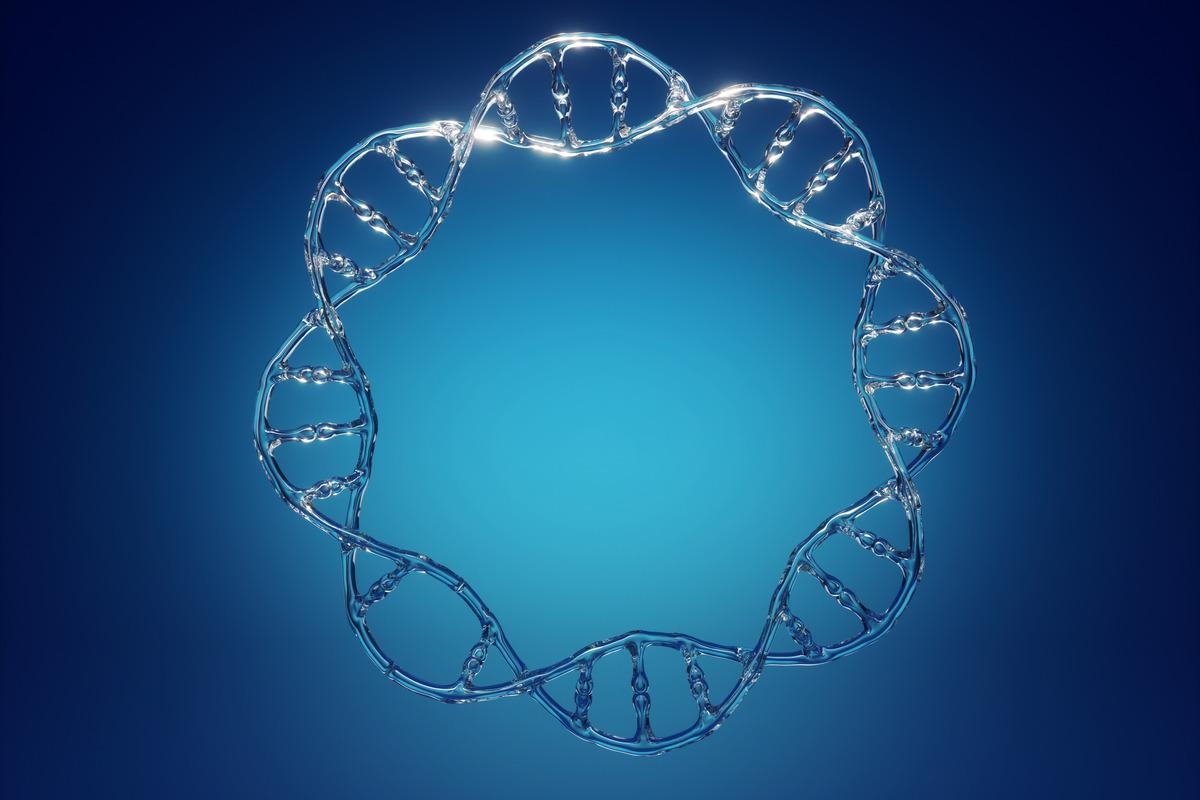Reviewed by Danielle Ellis, B.Sc.Jun 17 2022
Professor Dr. Anton Henssen of Charité – Universitätsmedizin Berlin and the Helmholtz Association’s Max Delbrück Center (MDC) for Molecular Medicine, along with a group of researchers from the United States and the United Kingdom, have received a grantfor a Cancer Grand Challenge.

Image Credit: wacomka/Shutterstock.com
The international group is given nearly €24 million to study the role of ring-shaped DNA strands in tumor progression and how to combat them. More than a million of them will be available to Professor Henssen’s Berlin team.
In 2014, Professor Henssen discovered something unusual in the cells of pediatric cancer patients: small rings of DNA, indicating that a portion of the genetic data was no longer bundled as it should have been in the chromosomes.
The rings had certainly disturbed the rest of the genome, causing mutations in the children’s cells. After making his discovery, Professor Henssen could not stop thinking about it. Since 2019, Professor Henssen has directed the Emmy Noether Research Group “Genomic Instability in Pediatric Cancer” at the Experimental and Clinical Research Center (ECRC), a Charité and MDC partnership.
When I began getting interested in the circular DNA and its role in the development of cancer, I was pretty much on my own.”
Dr Anton Henssen, Professor, Charité – Universitätsmedizin Berlin
In addition to his investigation, he examines young cancer patients at Charité’s Department of Pediatric Oncology and Hematology. According to him, the field is now garnering curiosity that is more scientific. Professor Henssen and his CancerCirculome project have been getting funding from the European Research Council (ERC) for about two years now, thanks to a Starting Grant.
Cancer Grand Challenges, a funding effort established in 2020 by the two largest cancer research funders in the world (Cancer Research UK and the National Cancer Institute, part of the National Institutes of Health in the United States), is also conscious of the potentially underappreciated role of the small DNA rings.
It picked extrachromosomal DNA, or ecDNA for short, as one of nine obstacles in its most recent funding round. Cancer Grand Challenges currently assists over 700 researchers and advocates in ten countries. 11 teams have already been funded to tackle the most difficult challenges in cancer research, with four new teams revealed on June 16th, 2022.
“When I saw that, I knew I wanted to participate in the challenge,” says Prof. Henssen, who on June 1st started a Mildred Scheel Professorship funded by German Cancer Aid at Charité.
He explains that only a few groups worldwide are progressing on ecDNA. Now, the group he is a part of includes scientists from the United States, the United Kingdom, and Germany and is encouraged by Professor Paul Mischel of Stanford Medicine in California who received funding from Cancer Grand Challenges for its project called eDyNAmiC (extrachromosomal DNA in Cancer). In the next five years, the team will collect £20 million.
Professor Henssen and his group in Berlin will have access to approximately one million of these funds.
According to Professor Henssen, researchers know that nearly one-third of all childhood and adult tumors have DNA rings in their cells and that these tumors are mostly aggressive: “Now we want to find out what exactly makes the rings so dangerous, how they form, and how we can slow them down—so that we can develop more effective therapies.”
In the project team, biologists and physicians are not the only ones addressing this challenge but mathematicians and data scientists are also associated.
Professor Henssen and his Berlin team, which involves scientists from the Berlin Institute of Health at Charité (BIH), intend to begin by studying the structure of the rings in detail to determine how their DNA is packaged in histones and other proteins, as well as how gene expression is controlled.
“It’s possible that changes in gene expression mean the rings help the tumors become resistant to existing therapies,” he says.
It is not shocking that Professor Henssen is pleased to see his once “niche” topic garnering such consideration and support: “It’s the best thing that could have happened, as far as I’m concerned.”
He now wishes that it would not be too long before he can assist his young patients—who have their entire lives in front of them—with an innovative therapy that targets the rings and causes the fatal tumors to vanish.